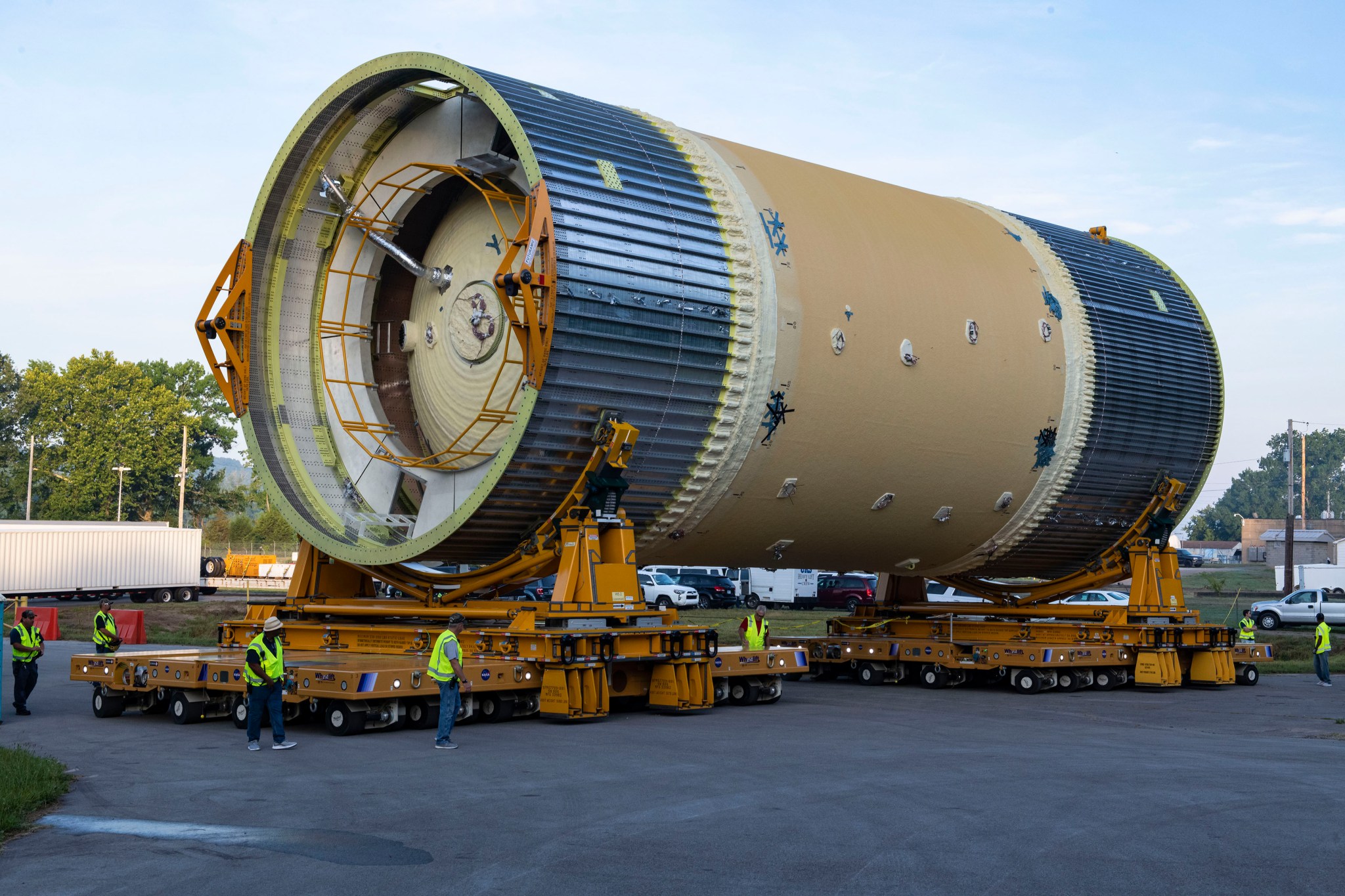As the world reflects on the 50th anniversary of the Apollo missions, NASA is looking forward to its next giant leaps. One way NASA ensures the safety of astronauts and the success of the Artemis missions to the Moon in preparation for future missions to Mars is by testing the Space Launch System (SLS) rocket structures.
With the recent delivery of the last structural test article, the liquid oxygen tank, to NASA’s Marshall Space Flight Center in Huntsville, Alabama, and the start of testing in June for the largest structural test article — the 149-foot-tall liquid hydrogen tank — NASA is more than halfway through SLS structural testing.

“This is a historic moment for the Marshall team as well as a significant milestone for the Artemis program,” said SLS program manager John Honeycutt. “We are more than halfway through the largest test campaign at Marshall since articles from NASA’s Space Shuttle Program were tested here. With the delivery of the liquid oxygen tank test article, we’re entering the final stage of Space Launch System structural testing.”
SLS, the agency’s first rocket built to send humans to deep space since the Saturn V, will have the power to take astronauts forward to the Moon and ultimately to Mars. Testing the new, increasingly complex pieces of hardware for the first flight of SLS and NASA’s Orion spacecraft is critical to the success not only of the first mission but to future missions, especially for the core stage that is used on all configurations of the rocket.
Marshall has tested major components of the core stage, upper stage and payload structures for SLS to determine they will be able to withstand the forces and conditions they will ultimately face during launch and flight. To date, Marshall test engineers have completed testing on the whole upper part of the rocket, which includes the interim cryogenic propulsion stage that will give Orion the final boost to the Moon, and two of the four core stage pieces being tested: the engine section that connects to the four RS-25 engines and the intertank, the piece of the core stage that feels the most force during launch and solid rocket booster separation.
“Here at Marshall we’re able to see firsthand how unique each of the different core stage components are from one another,” said Matthew Cash, lead structural test engineer for the intertank and liquid oxygen tank structural testing. “More than 11 million pounds of force was applied to the intertank. That’s the most of any SLS test element.”
The Marshall team completed testing on the intertank in June, which included tests to see just how much force the intertank could stand, and then began testing the liquid hydrogen tank test article. During testing, dozens of hydraulic cylinders at Marshall’s Test Stand 4693 push and pull on the giant tank to mimic the same stresses and forces it will endure during liftoff and flight.
Engineers are preparing the last structural test article, the liquid oxygen tank, to begin testing to start this fall. All test articles, including the liquid hydrogen and the liquid oxygen tanks, are structurally identical to their flight versions. The liquid hydrogen tank test article is bolted to a huge 80,000-pound steel ring on the test stand, where it is suspended within the test stand with the loads applied at the base. Thirty-eight hydraulic cylinders are then calibrated and positioned all along the tank to apply millions of pounds of crippling force from all sides, and engineers measure and record the effects of the launch and flight forces. Meanwhile, the test article is filled with cryogenic fluid to simulate fuel and propellants used during flight.
“It will take about four months to complete each of the test scenarios,” said Mike Nichols, the test conductor for the liquid hydrogen tank tests “Engineers carefully monitor the testing and data from stations several miles away, noting how the tank responds to the varying pressures and mechanical loading through a series of sensors attached to the tank.”
The rocket’s massive core stage is made up of five major components: the engine section, liquid hydrogen tank, intertank, liquid oxygen tank and the forward skirt. Together, these five parts make up the “core” of the rocket, and all the qualification testing will verify the components of the core stage are ready for Artemis 1.
The Space Launch System is the most powerful rocket ever built by NASA. It’s designed to safely send humans to the Moon — to stay — so that a new era of deep space exploration is possible. Testing ensures the success, not only of the initial flights, but also those SLS flights that will carry American astronauts to the Moon and ultimately to Mars.
For more on NASA’s SLS, visit:
Tracy McMahan
Marshall Space Flight Center, Huntsville, Ala.
256-544-0034
tracy.mcmahan@nasa.gov



























